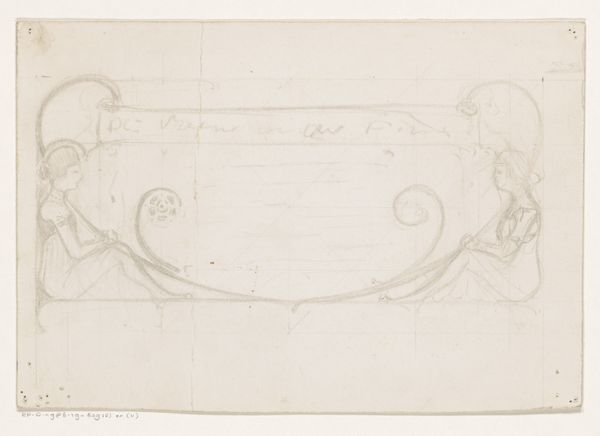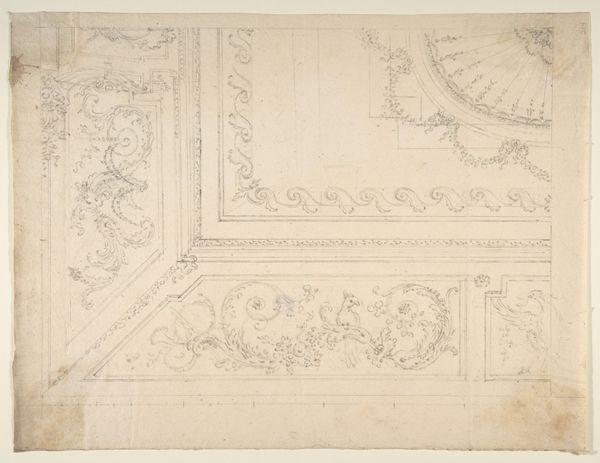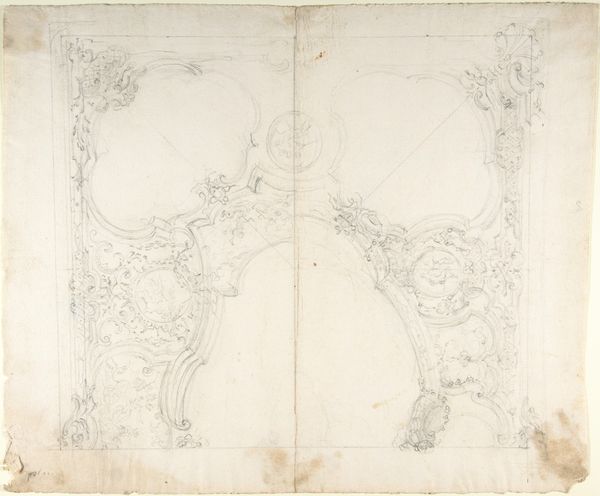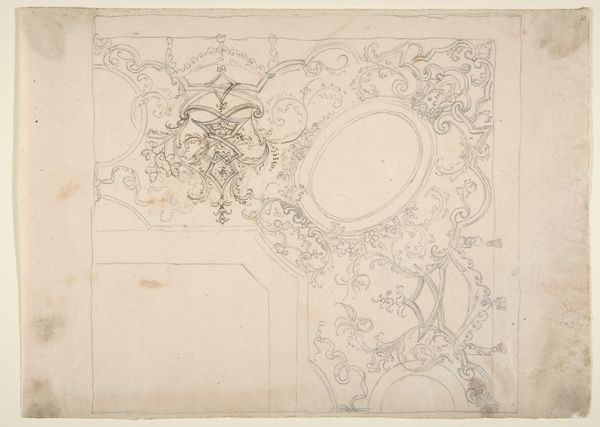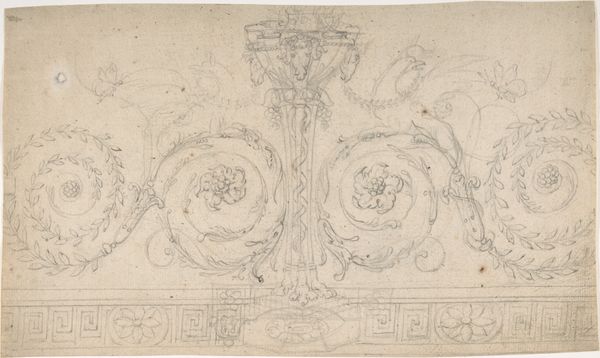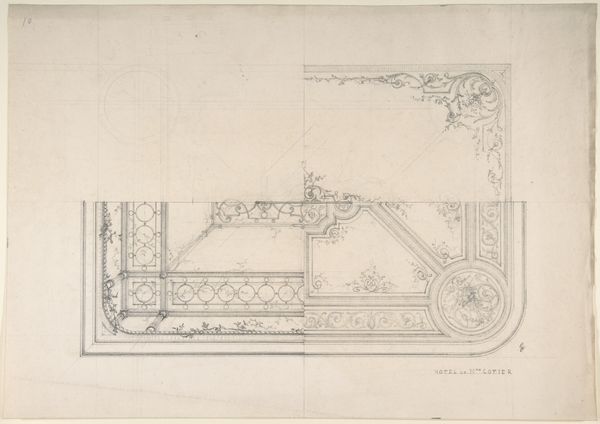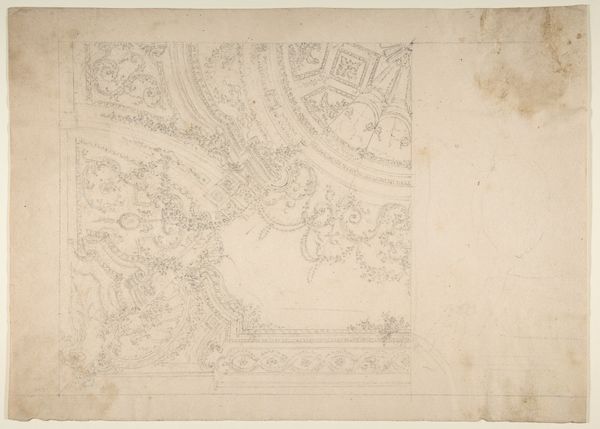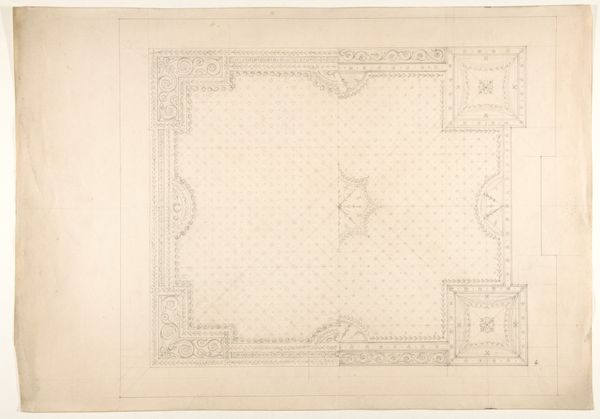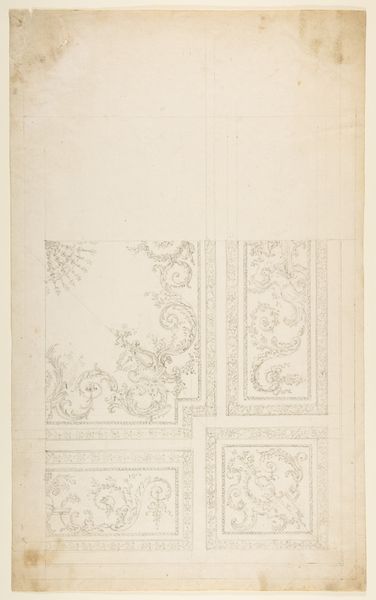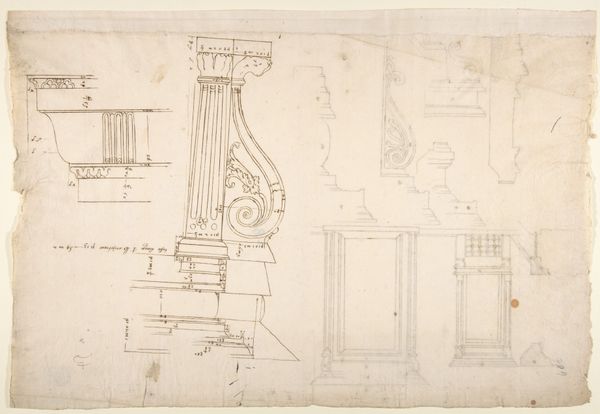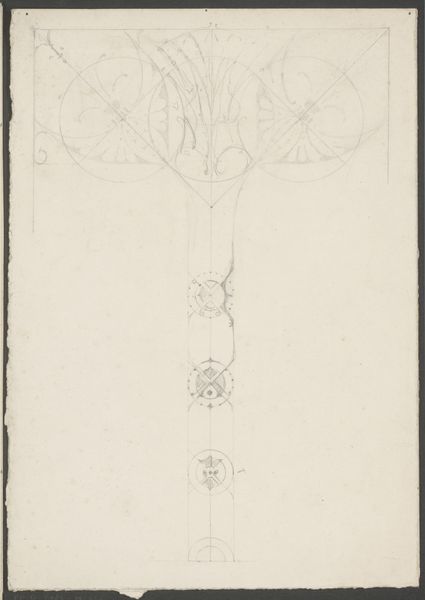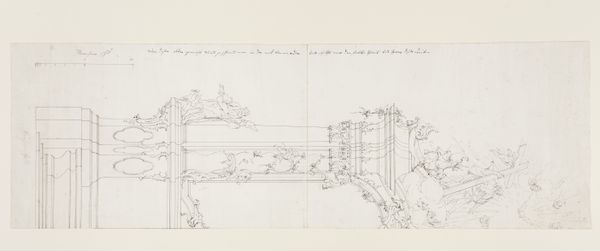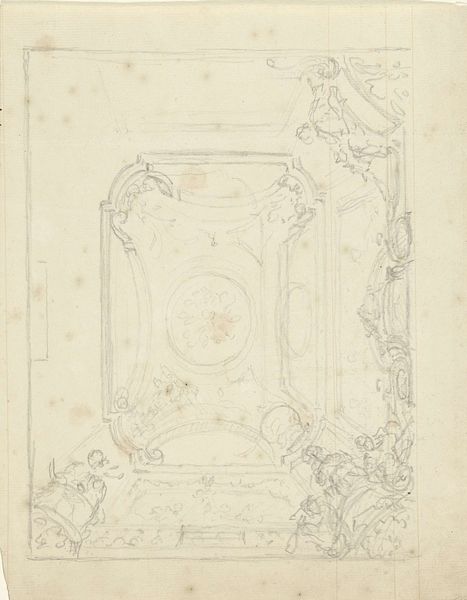
drawing, print, pencil, architecture
#
drawing
#
neoclacissism
# print
#
geometric
#
pencil
#
academic-art
#
decorative-art
#
architecture
Dimensions: sheet: 10 x 15 in. (25.4 x 38.1 cm)
Copyright: Public Domain
Editor: This delicate pencil drawing, "Design for a Ceiling," comes to us from somewhere in the 1700s. It feels almost like an architect's secret plan, revealing a hidden world meant to be admired from below. It's quite faint, though; how do you see this work, especially in the context of its time? Curator: It’s a tantalizing glimpse into the visual culture of the Neoclassical era. Consider where such a ceiling might be found: perhaps in a private residence of the emerging bourgeoisie, or even a public building designed to inspire civic virtue. Notice the geometric precision, combined with flowing, organic forms. Editor: Yes, the contrast between the strict geometry and those figures—they almost look like sea creatures—is fascinating. Was there a specific intention behind this combination of styles? Curator: Absolutely. Neoclassicism was heavily invested in ideas of order and reason, looking back to ancient Greece and Rome for models of societal organization as much as artistic inspiration. The presence of those decorative motifs, rooted in mythology, also reinforced the patron's perceived connection to the cultural elite and their understanding of history. Think about how the commission of such designs might reinforce their social standing, quite publicly. Editor: So, it’s not just a pretty design, but a statement? It's like saying, "I have the money and the taste to appreciate this.” Curator: Precisely. And it's not just about personal taste. Commissioning and displaying such work actively shaped the visual landscape, promoting certain aesthetic and ideological values over others. How does viewing it today, within the museum setting, change that original intention, do you think? Editor: I hadn't considered the museum's role in all this! It's a powerful recontextualization. Now, it's a historical artifact rather than a symbol of personal status. Curator: Indeed. It reminds us how profoundly institutions influence how we perceive art. Editor: It really does shift my perspective. Now, I see it less as decoration and more as a window into a whole social structure. Thanks!
Comments
No comments
Be the first to comment and join the conversation on the ultimate creative platform.
